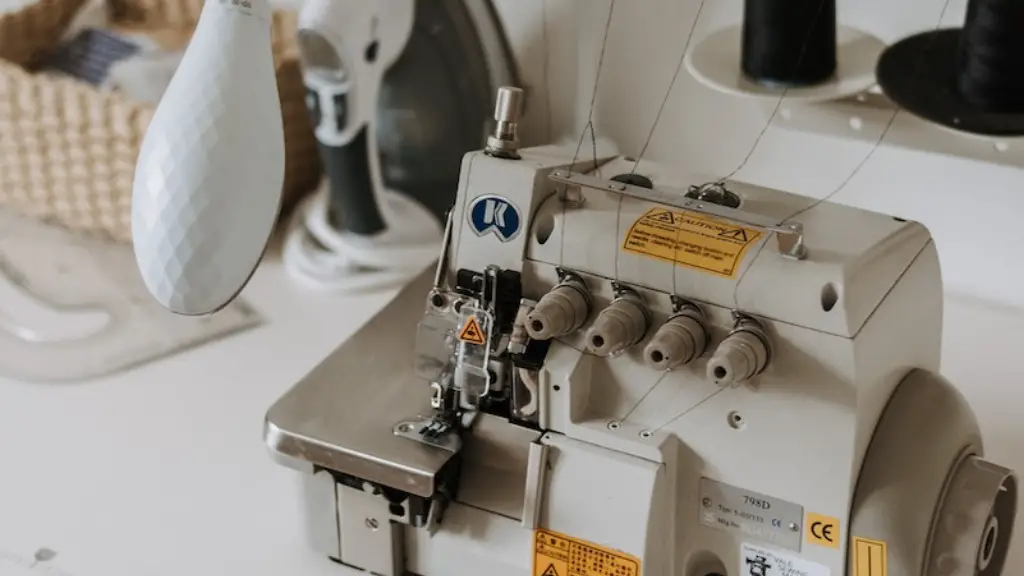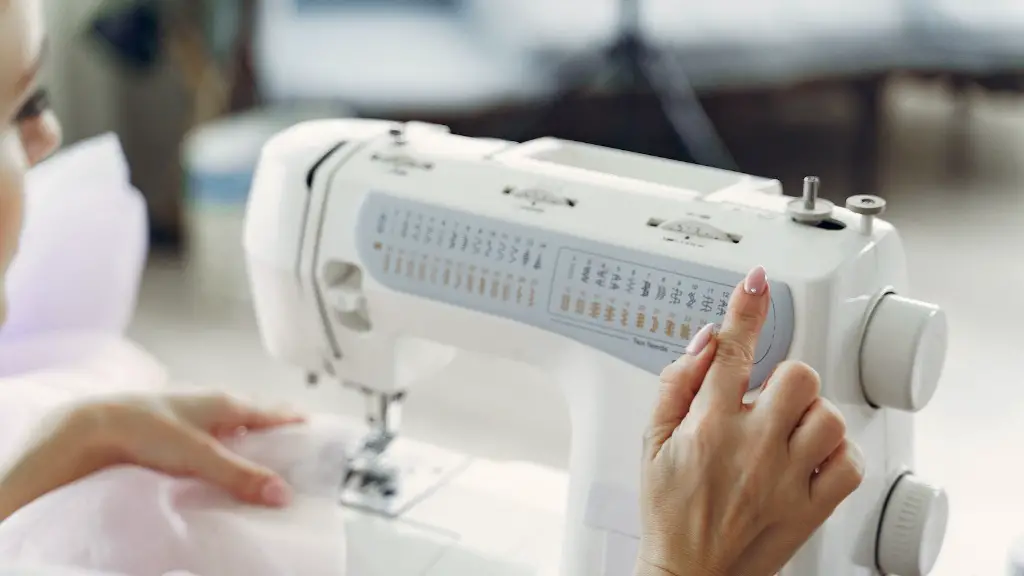First, let’s talk about what a notch is. A notch is a small cut or mark made on a garment, typically at the seam, to indicate where two pieces should be joined together. You’ll often see notches on patterns as well. Now that you know what a notch is, let’s talk about how to use them!
When you’re cutting out your pattern pieces, make sure to cut along the notched lines. This will help you line up the pieces correctly when you go to sew them together. When you’re sewing the pieces together, match up the notches as you go. This will help ensure that your garment turns out looking just like the pattern.
Now that you know how to use a sewing pattern’s notches, you’re one step closer to being a sewing pro!
To use a sewing pattern notches, first identify the notches on the pattern pieces. Then, match the notches on the pattern pieces together at the seams. When you sew the pieces together, sew along the line that connects the notches. This will ensure that the pattern pieces are sewn together correctly.
What are notches used for on a pattern piece?
Notches are small cuts or slits that are made in the fabric and are used to help match and align seams. They can also be used in a variety of other situations that require sewing marks. The following are some instances that require (or benefit from) the addition of notches:
-Transferring dart marks from pattern onto fabric (at the seam allowance).
-Helping to match print or pattern pieces when cutting out fabric.
-Indicating where to stop or start sewing when working with bias tape or binding.
-As a marker for pleats, tucks, or other fabric manipulations.
Make sure to put notches in the same places on the back pattern piece as you do on the front, so that when you join the pieces together, the notches will match up. For example, if you put a notch on the side seam of the back pattern piece, make sure to put it in the same position as the corresponding notch on the front pattern piece – which is at the top of the seam. This will make it easier to line everything up when you’re sewing the pieces together.
What are notches used for sewing
Notches are triangular shaped wedges or plain slashes added at specified locations along the seam allowance edge. They provide an important guideline for matching up corresponding seams and edges in the sewing process. Without notches, it would be very difficult to match up seams and edges accurately, especially on complex garments. Notches are generally cut into the seam allowance, so they will not be visible on the finished garment.
There are a few things you can do to make the writing process easier and more efficient. One suggestion is to use a marker or pen that has a fine point. This will help you to create neater and more consistent letters. Another tip is to use a guide sheet when you are first starting out. This will help you to keep your letters in straight lines and will also help you to space them out evenly. Lastly, take your time and don’t be afraid to make mistakes. Everyone makes them when they are learning something new. Just keep practicing and you will eventually get the hang of it.
What are the types of pattern notches?
Pattern notches are small triangles that are cut into the seam allowance at the edge of the fabric. These notches help you line up the fabric when you are sewing it together. Center notches are also cut into the seam allowance, but they are larger and are placed in the center of the fabric. These notches help you line up the fabric when you are cutting it.
There are a few different ways that you can trace patterns. One way is to lay out your original pattern on a flat surface and then lay your tracing paper over it. You can hold the tracing paper into place using pattern weights or even tins of beans. Once the tracing paper is secure, use a pencil and a ruler to trace over the lines of the pattern. This is a great way to get an accurate tracing of the pattern.
Can you use a pattern notcher on fabric?
The Pattern Notcher is a great tool for notching corners on paper patterns. However, it is very important to only use the tool on paper and never on fabric. This is because the blade on the notcher is very sharp and can easily damage fabric.
Notching is a great way to remove excess fabric without creating bulk. By notching the fabric, you allow it to come closer together, which gives you a cleaner look.
How do you do a notch cut
In order to break out the waist of a hammer, you will need to use a lot of force. You may need to use a sledgehammer or another heavy object to do this. Be very careful when doing this, as you could easily injure yourself.
Notches are small triangular marks that are cut into the fabric to help you match up your pattern pieces correctly. They are usually located around the outer edges of the pattern pieces. To mark the notches, simply cut outwards around the triangle.
What are examples of notch?
A notch is a small cut or nick in something. People make notches to keep track of things. If you’ve even seen a little U-shaped or V-shaped cut in something, you’ve seen a notch. In prison, criminals will make notches on the wall to keep track of how long they’ve been there.
Notching is a manufacturing process that offers a wide range of advantages, one of which is the ability to create complex shapes. The workpiece will take the shape of the punch and die tool set used in the process. Therefore, manufacturing companies can create workpieces in complex and unique shapes by using the right punch and die tool set.
How many types of notches are there
Most notches are of the rectangular type, but triangular notches are also common.
Rectangular notches are usually made with either a 60° or 90° angle between the sides and the base, but other angles are occasionally used. The principal dimensions of a rectangular notch are the width of opening, B, and the height of water above the base of the notch, H.
Triangular notches are usually made with a 60° angle between the sides and the base, but other angles are occasionally used. The principal dimensions of a triangular notch are the width of opening, B, and the height of water above the base of the notch, H.
Notches are generally classified according to the shape of the opening at the top of the obstruction. The two common types are the rectangular and triangular notch.
A rectangular weir is a notch with a rectangular opening. The principal dimensions of a rectangular weir are the width of opening, B, and the height of water above the base of the notch, H.
A triangular weir is a notch with a triangular opening. The principal dimensions of a triangular weir are the width of opening, B, and the height of water above the base of the notch, H
The knowledge discovery process is a process used to find meaningful patterns and insights in data. It typically involves data cleaning, data integration, data selection, data transformation, pattern discovery, pattern evaluation, and knowledge presentation.
What are the 3 methods of pattern making?
There are four main methods of pattern making: drafting, draping, flat paper patternmaking, and CAD.
Drafting is the most traditional method of pattern making, and is done by hand using rulers, curve templates, and a french curve. It is a very precise method, but can be time consuming.
Draping is a method of pattern making that involves draping fabric on a dress form. This is a quick way to create a pattern, but it can be less accurate than other methods.
Flat paper patternmaking is a method of pattern making that involves creating a pattern on a flat piece of paper. This is a quick and easy method, but it is not as accurate as other methods.
CAD (computer aided design) is a method of pattern making that is done using a computer program. This is a very accurate method, but it can be expensive.
In order to create a simple pattern, a pattern maker must follow five essential steps: gathering their material, taking proper measurements, adding styles and designs, grading their design, then draping it to result in the final garment. Each of these steps are crucial in order to create a good pattern that will result in a well-made final garment. If even one step is done incorrectly, it can throw off the pattern and result in a less than perfect garment.
How deep should you clip a notch into fabric
If you are cutting through your stitches, you are not only potentially ruining your garment, but also wasting time and fabric. Be sure to clip your scissors close to the stitch, but not through it. You can also add a few notch clips along areas that are less curved, such as the back neckline. This will help release tension without removing too much excess fabric.
Pattern preliminaries:
Be sure you have all the necessary pattern pieces.
Spread out fabric carefully.
Choose a cutting layout:
With-nap layout: lengthwise fold
Without-nap layout: crosswise fold
Lengthwise double fold
Grainline and layout:
Anchor the pattern to the fabric.
Conclusion
First, find the notches on the pattern pieces. Notches are small triangles cut into the fabric that indicate where two pieces of fabric should line up. There will be a notch on each side of the pattern piece.
Next, align the notches on the two pattern pieces together. The notches should be lined up on the right side of the fabric.
Then, sew the two pattern pieces together along the seam line. Start at one end and sew to the other end. Pins may be used to keep the fabric in place.
Finally, finish the seam by serging or using a zig-zag stitch.
If you’re using a commercial sewing pattern, the notches on the pattern pieces will correspond to notches on the fabric. You can use these notches as a guide to help you line up the pattern pieces as you’re cutting out the fabric. If you’re working with a self-drafted or vintage pattern, you may need to mark the notches on the pattern pieces yourself before cutting out the fabric. Once you’ve cut out the fabric pieces, you can use the notches to align the fabric pieces as you’re sewing them together.





